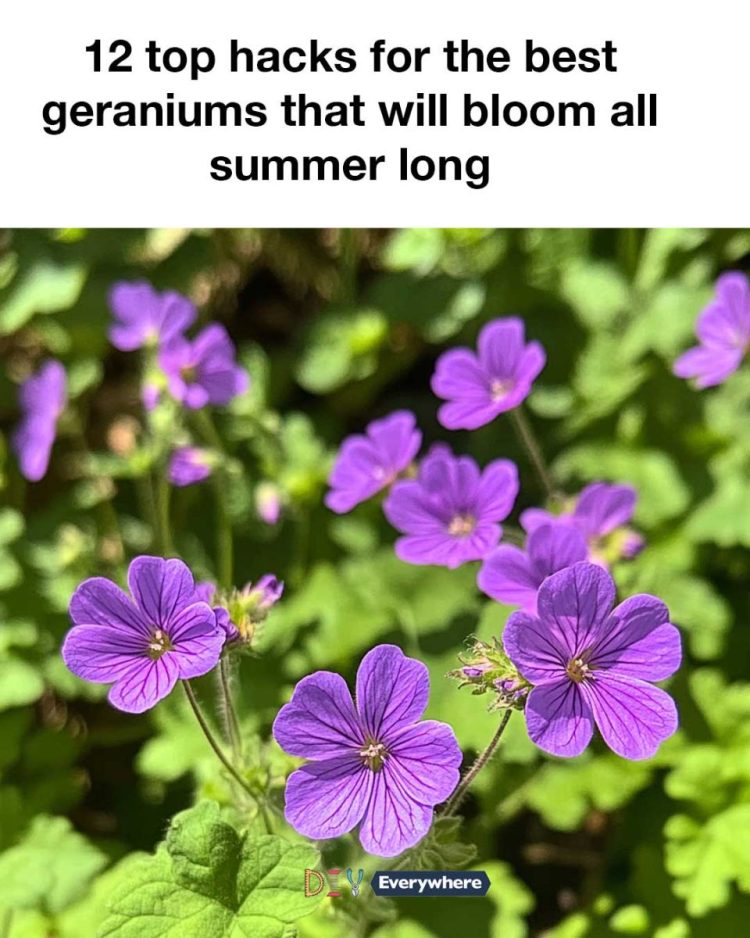Geraniums are a beloved choice for gardeners due to their vibrant colors and long-lasting blooms. With the right care and attention, these hardy plants can provide a stunning display throughout the summer months. Whether you’re a seasoned gardener or a novice, understanding the nuances of geranium care can make all the difference in achieving a flourishing garden.
In this article, we will explore twelve essential hacks to ensure your geraniums not only survive but thrive all summer long. From selecting the right variety to mastering watering techniques, these tips will help you cultivate the most beautiful geraniums in your neighborhood.
1. Choose the Right Variety for Continuous Blooming
Selecting the right geranium variety is crucial for continuous blooming. Zonal geraniums, known for their upright growth and large blooms, are a popular choice for summer gardens. Alternatively, ivy geraniums offer a trailing habit perfect for hanging baskets and window boxes. Look for varieties labeled as ‘continuous blooming’ or ‘ever-blooming’ to ensure a steady display of flowers.
Consider the climate in your area when choosing a variety. For instance, if you live in a hot, dry region, opt for drought-tolerant varieties like ‘Calliope Dark Red’ or ‘Maverick Star’. These types are bred to withstand high temperatures while maintaining their vibrant blooms.
2. Optimal Soil Mix for Healthy Geraniums
Geraniums thrive in well-draining soil with a slightly acidic to neutral pH (6.0 to 7.0). A good soil mix for geraniums includes equal parts of potting soil, peat moss, and perlite or sand. This combination ensures adequate drainage while retaining enough moisture for the roots.
Before planting, amend your garden soil with organic matter such as compost or well-rotted manure to improve its structure and nutrient content. If you’re growing geraniums in containers, ensure the pots have drainage holes to prevent waterlogging, which can lead to root rot.
3. Sunlight: Finding the Perfect Balance
Geraniums require plenty of sunlight to bloom profusely. Ideally, they should receive at least 6 to 8 hours of direct sunlight each day. However, in extremely hot climates, some afternoon shade can prevent the leaves from scorching.
Observe your garden’s sunlight patterns and choose a location that offers the right balance. If you’re growing geraniums indoors, place them near a south or west-facing window where they can soak up the sun’s rays. Consider using grow lights if natural sunlight is insufficient.
4. Watering Techniques to Prevent Overwatering
Overwatering is a common mistake that can lead to root rot and other issues in geraniums. To avoid this, water your plants deeply but infrequently. Allow the top inch of soil to dry out between waterings, and then water thoroughly until it drains from the bottom of the pot.
In hot weather, you may need to water more frequently, but always check the soil moisture before adding more water. Consider using a moisture meter to accurately gauge when your geraniums need watering.
5. Pruning Tips for Encouraging More Blooms
Regular pruning is essential for encouraging more blooms and maintaining the shape of your geraniums. Pinch back the stems when the plants are young to promote bushier growth. As the plants mature, remove any dead or yellowing leaves to improve air circulation and reduce the risk of disease.
see continuation on next page
